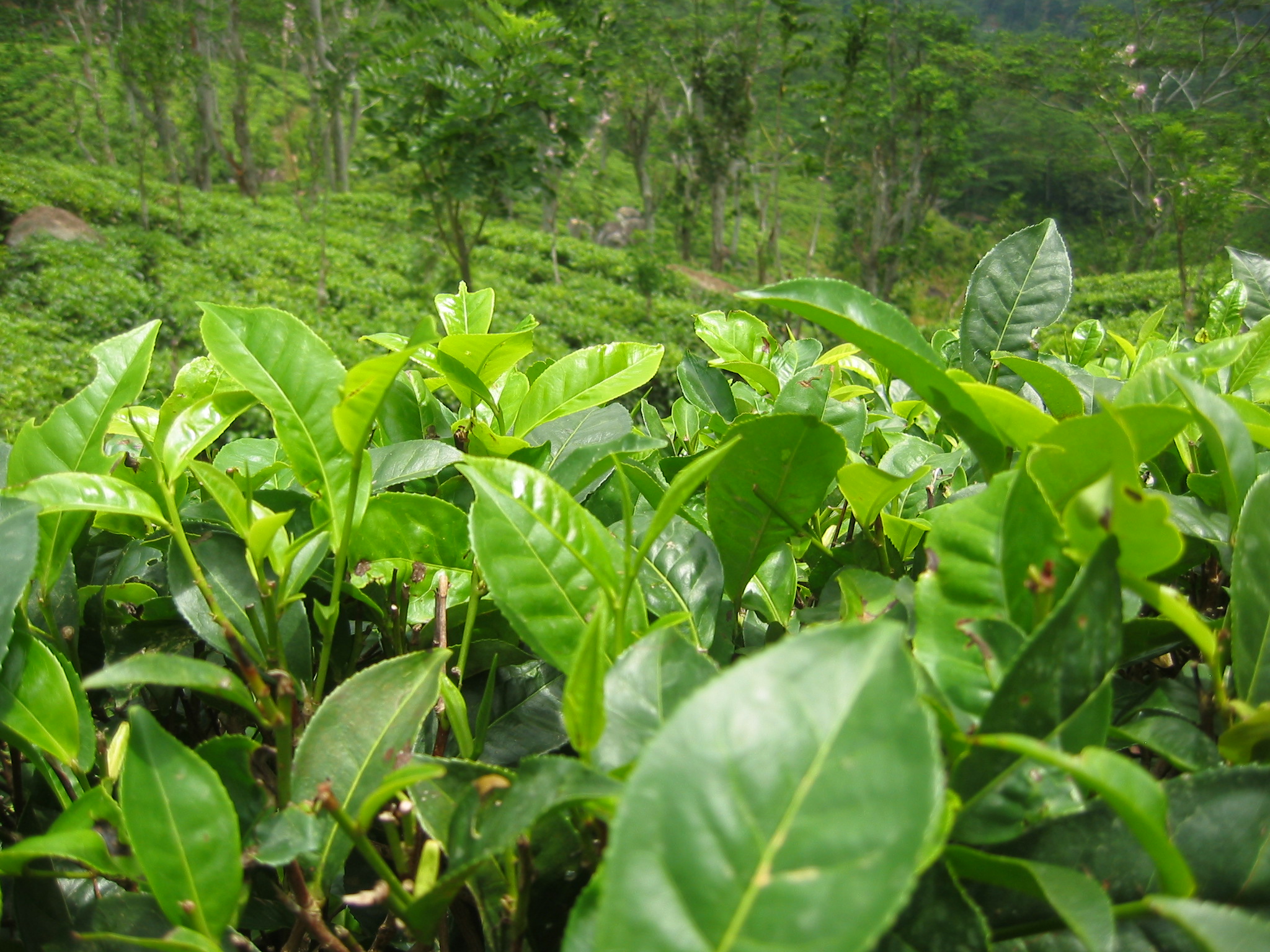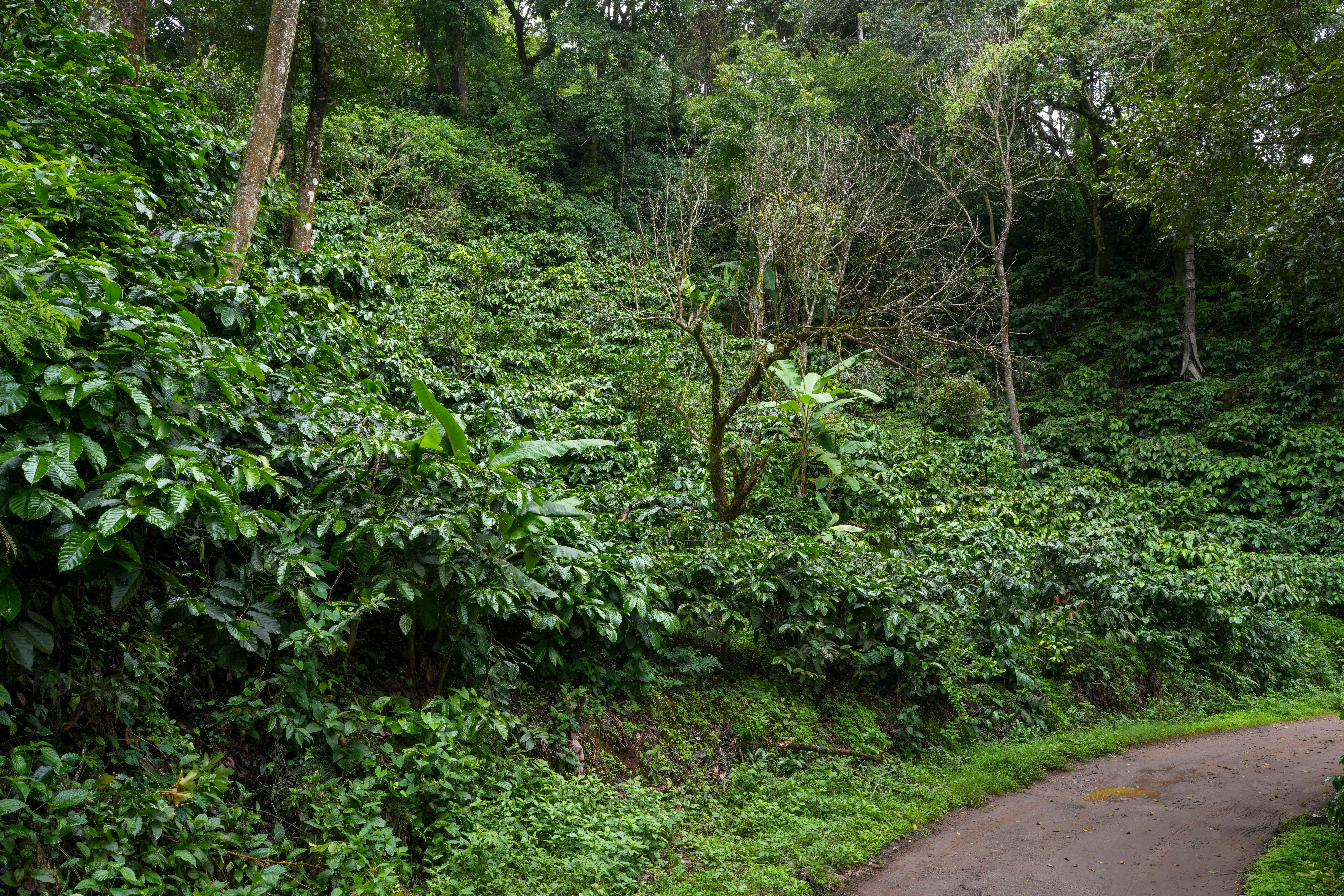|
Caffeine Synthase
Caffeine synthase is a methyltransferase enzyme involved in the caffeine biosynthesis pathway. It is expressed in tea species, coffee species, and cocoa species. The enzyme catalyses the following reactions: * ''S''-adenosyl-L-methionine + theobromine \rightleftharpoons ''S''-adenosyl-L-homocysteine + caffeine + H+ * ''S''-adenosyl-L-methionine + paraxanthine \rightleftharpoons ''S''-adenosyl-L-homocysteine + caffeine + H+ * 7-methylxanthine + ''S''-adenosyl-L-methionine \rightleftharpoons ''S''-adenosyl-L-homocysteine + H+ + theobromine Caffeine synthase is expressed in the ''Camellia'' species '' irrawadiensis'', '' ptilophylla'', and '' sinensis''; the ''Coffea'' species '' arabica'', and '' canephora''; and in ''Theobroma cacao ''Theobroma cacao'' (cacao tree or cocoa tree) is a small ( tall) evergreen tree in the Malvaceae family. Its seedscocoa beansare used to make chocolate liquor, cocoa solids, cocoa butter and chocolate. Although the tree is native to the tr ... [...More Info...] [...Related Items...] OR: [Wikipedia] [Google] [Baidu] |
Methyltransferase
Methyltransferases are a large group of enzymes that all methylate their substrates but can be split into several subclasses based on their structural features. The most common class of methyltransferases is class I, all of which contain a Rossmann fold for binding ''S''-Adenosyl methionine (SAM). Class II methyltransferases contain a SET domain, which are exemplified by SET domain histone methyltransferases, and class III methyltransferases, which are membrane associated. Methyltransferases can also be grouped as different types utilizing different substrates in methyl transfer reactions. These types include protein methyltransferases, DNA/RNA methyltransferases, natural product methyltransferases, and non-SAM dependent methyltransferases. SAM is the classical methyl donor for methyltransferases, however, examples of other methyl donors are seen in nature. The general mechanism for methyl transfer is a SN2-like nucleophilic attack where the methionine sulfur serves as the l ... [...More Info...] [...Related Items...] OR: [Wikipedia] [Google] [Baidu] |
Camellia
''Camellia'' (pronounced or ) is a genus of flowering plants in the family Theaceae. They are found in tropical and subtropical areas in East Asia, eastern and South Asia, southern Asia, from the Himalayas east to Japan and Indonesia. There are more than 220 described species; almost all are found in southern China and Indochina. Camellias are popular ornamental, tea, and woody-oil plants cultivated worldwide for centuries. Over 26,000 cultivars, with more than 51,000 cultivar names, including synonyms, have been registered or published. The leaves of ''Camellia sinensis, C. sinensis'' are processed to create tea, and so are of particular economic importance in East Asia, Southeast Asia, and the Indian subcontinent, with the processed leaves widely sold and consumed globally. The ornamental ''Camellia japonica, C. japonica'', ''Camellia sasanqua, C. sasanqua'' and their Hybrid (biology)#Hybrid plants, hybrids are the source of hundreds of garden cultivars. ''Camellia oleifera, C ... [...More Info...] [...Related Items...] OR: [Wikipedia] [Google] [Baidu] |
EC 2
EC or ec may refer to: Arts and entertainment * EC Comics, an American publisher of comic books * '' Electric Circus'', a Canadian television program * Eric Clapton Stratocaster, signature model guitars by Fender Businesses and organisations Government * Environment and Climate Change Canada, a Canadian federal government department * European Commission, the executive body of the European Union * European Council, the European Union institution comprising the college of heads of state of government * European Communities, one of the three pillars of the EU * European Community, a significant component of the European Union from 1993 to 2009, renamed European Economic Community Transportation * EuroCity, a train service of the European inter-city rail network * EasyJet Europe (IATA code: EC) * Avialeasing (former IATA code: EC), a cargo airline * East Coast (train operating company), a train operating company in the UK * EC, the aircraft registration prefix for Spain Educ ... [...More Info...] [...Related Items...] OR: [Wikipedia] [Google] [Baidu] |
Theobroma Cacao
''Theobroma cacao'' (cacao tree or cocoa tree) is a small ( tall) evergreen tree in the Malvaceae family. Its seedscocoa beansare used to make chocolate liquor, cocoa solids, cocoa butter and chocolate. Although the tree is native to the tropics of the Americas, the largest producer of cocoa beans in 2022 was Ivory Coast. The plant's leaf, leaves are alternate, entire, unlobed, long and broad. Description Flowers The flowers are produced in clusters directly on the Trunk (botany), trunk and older branches; this is known as cauliflory. The flowers are small, diameter, with pink Calyx (botany), calyx. The floral formula, used to represent the structure of a flower using numbers, is ✶ K5 C5 A(5°+52) (5). While many of the world's flowers are pollinated by bees (Hymenoptera) or Butterfly, butterflies/moths (Lepidoptera), cacao flowers are pollinated by tiny flies, ''Forcipomyia'' biting midges. Using the natural pollinator ''Forcipomyia'' midges produced more fruit tha ... [...More Info...] [...Related Items...] OR: [Wikipedia] [Google] [Baidu] |
Coffea Canephora
''Coffea canephora'' (especially ''C. canephora var. robusta'', so predominantly cultivated that it is often simply termed ''Coffea robusta'', or commonly robusta coffee) is a species of coffee plant that has its origins in central and western sub-Saharan Africa. It is a species of flowering plant in the family (biology), family Rubiaceae. Though widely known as ''Coffea robusta'', the plant is scientifically identified as ''Coffea canephora'', which has two main varieties, ''robusta'' and ''nganda''. ''Coffea robusta'' represents between 40% and 45% of global coffee production, with ''Coffea arabica'' constituting most of the remainder. There are several differences between the composition of coffee beans from ''C. arabica'' and ''C. robusta''. Beans from ''C. robusta'' tend to have lower acidity, more bitterness, and a more woody and less fruity flavor compared to ''C. arabica'' beans. Most of it is used for instant coffee. Description Robusta is a species of flowering ... [...More Info...] [...Related Items...] OR: [Wikipedia] [Google] [Baidu] |
Coffea Arabica
''Coffea arabica'' (), also known as the Arabica coffee, is a species of flowering plant in the coffee and madder family Rubiaceae. It is believed to be the first species of coffee to have been cultivated and is the dominant cultivar, representing about 60% of global production. Coffee produced from the less acidic, more bitter, and more highly caffeinated robusta bean (''Coffea canephora, C. canephora'') makes up most of the remaining coffee production. The natural populations of ''Coffea arabica'' are restricted to the forests of South Ethiopia and Yemen. Taxonomy ''Coffea arabica'' was first species description, described scientifically by Antoine de Jussieu, who named it ''Jasminum arabicum'' after studying a specimen from the Hortus Botanicus (Amsterdam), Botanic Gardens of Amsterdam. Carl Linnaeus, Linnaeus placed it in its own genus ''Coffea'' in 1737. ''Coffea arabica'' is one of the polyploid species of the genus ''Coffea'', as it carries four copies of the eleven ch ... [...More Info...] [...Related Items...] OR: [Wikipedia] [Google] [Baidu] |
Coffea
''Coffea'' is a genus of flowering plants in the family Rubiaceae. ''Coffea'' species are shrubs or small trees native to tropical and southern Africa and tropical Asia. The seeds of some species, called coffee beans, are used to flavor various beverages and products. The fruits, like the seeds, contain a large amount of caffeine, and have a distinct sweet taste. The plant ranks as one of the world's most valuable and widely traded commodity crops and is an important export product of several countries, including those in Central and South America, the Caribbean and Africa. The coffee trade relies heavily on two of the over 120 species, ''Coffea arabica'' (commonly known simply as "Arabica"), which accounts for 60–80% of the world's coffee production, and ''Coffea canephora'' (known as " Robusta"), which accounts for about 20–40%. Both coffee species are vulnerable to shifts, caused by climate change, in their growing zones, which are likely to result in a decline in pr ... [...More Info...] [...Related Items...] OR: [Wikipedia] [Google] [Baidu] |
Camellia Sinensis
''Camellia sinensis'' is a species of evergreen shrub or small tree in the flowering plant family Theaceae. Its leaves, leaf buds, and stems can be used to produce tea. Common names include tea plant, tea shrub, and tea tree (unrelated to ''Melaleuca alternifolia'', the source of tea tree oil, or the genus ''Leptospermum'' commonly called tea tree). White tea, yellow tea, green tea, oolong, dark tea (which includes pu-erh tea) and black tea are all harvested from two of the five varieties which form the main crops now grown, ''C. sinensis'' var. ''sinensis'' and ''C. s.'' var. ''assamica'', but are Tea processing, processed differently to attain varying levels of oxidation with black tea being the most oxidized and white being the least. Kukicha (twig tea) is also harvested from ''C. sinensis'', but uses twigs and stems rather than leaves. Description ''Camellia sinensis'' is native to East Asia, the Indian Subcontinent, and Southeast Asia, but it is today cultivated all aro ... [...More Info...] [...Related Items...] OR: [Wikipedia] [Google] [Baidu] |
Camellia Ptilophylla
''Camellia ptilophylla'', also called the cocoa tea plant (not to be confused with the chocolate plant ''Theobroma cacao''), is a species of ''Camellia'' plant found in Southern Asia. It has insignificant levels of naturally occurring caffeine, unlike other varieties of the plant used to make tea. History For many years, it has been widely consumed by local inhabitants in the Longmen area of Guangdong Province ) means "wide" or "vast", and has been associated with the region since the creation of Guang Prefecture in AD 226. The name "''Guang''" ultimately came from Guangxin ( zh, labels=no, first=t, t= , s=广信), an outpost established in Han dynasty ... of China but has only started attracting scientific interest since 1988. It was first scientifically documented in the 1980s. Preparation for tea As with steeping most other teas, tea leaves are infused in just-boiled water for 3 min. The aroma profile of Cocoa tea is different from the traditional green tea, but the diffe ... [...More Info...] [...Related Items...] OR: [Wikipedia] [Google] [Baidu] |
Camellia Irrawadiensis
''Camellia'' (pronounced or ) is a genus of flowering plants in the family Theaceae. They are found in tropical and subtropical areas in East Asia, eastern and South Asia, southern Asia, from the Himalayas east to Japan and Indonesia. There are more than 220 described species; almost all are found in southern China and Indochina. Camellias are popular ornamental, tea, and woody-oil plants cultivated worldwide for centuries. Over 26,000 cultivars, with more than 51,000 cultivar names, including synonyms, have been registered or published. The leaves of ''Camellia sinensis, C. sinensis'' are processed to create tea, and so are of particular economic importance in East Asia, Southeast Asia, and the Indian subcontinent, with the processed leaves widely sold and consumed globally. The ornamental ''Camellia japonica, C. japonica'', ''Camellia sasanqua, C. sasanqua'' and their Hybrid (biology)#Hybrid plants, hybrids are the source of hundreds of garden cultivars. ''Camellia oleifera, C ... [...More Info...] [...Related Items...] OR: [Wikipedia] [Google] [Baidu] |
Caffeine
Caffeine is a central nervous system (CNS) stimulant of the methylxanthine chemical classification, class and is the most commonly consumed Psychoactive drug, psychoactive substance globally. It is mainly used for its eugeroic (wakefulness promoting), ergogenic (physical performance-enhancing), or nootropic (cognitive-enhancing) properties. Caffeine acts by blocking the binding of adenosine at a number of adenosine receptor types, inhibiting the centrally depressant effects of adenosine and enhancing the release of acetylcholine. Caffeine has a three-dimensional structure similar to that of adenosine, which allows it to bind and block its receptors. Caffeine also increases Cyclic adenosine monophosphate, cyclic AMP levels through nonselective Phosphodiesterase inhibitor, inhibition of phosphodiesterase, increases calcium release from intracellular stores, and Receptor antagonist, antagonizes GABA receptor, GABA receptors, although these mechanisms typically occur at concentrati ... [...More Info...] [...Related Items...] OR: [Wikipedia] [Google] [Baidu] |






